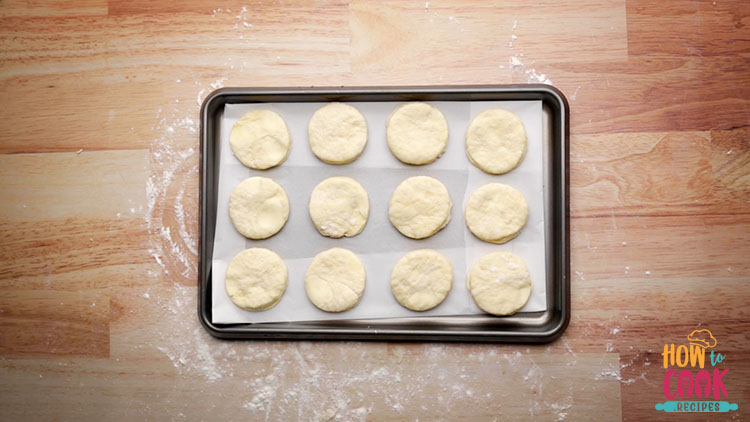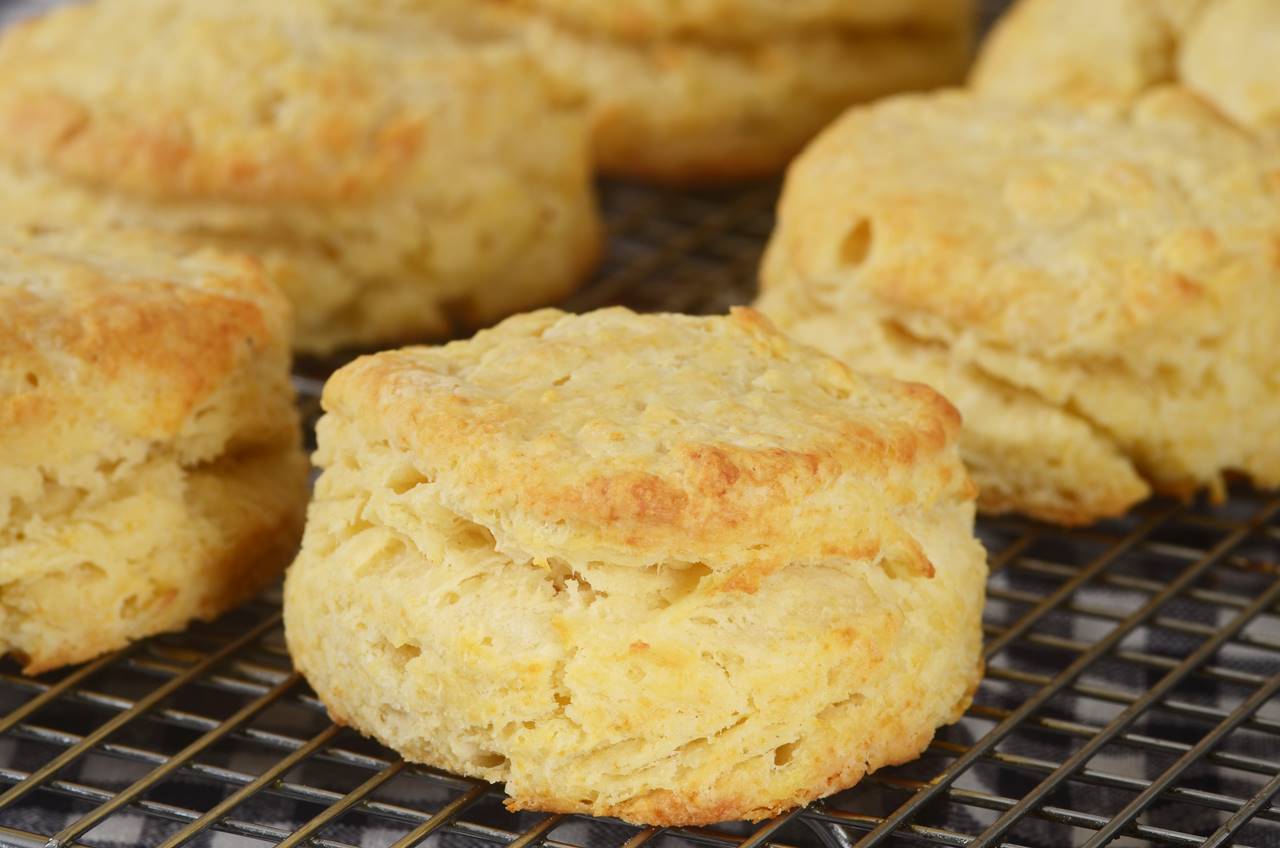
Repeat this process five more times, lightly sprinkling the dough with more flour as needed to keep it from sticking. Using your hands (never a rolling pin), gently press the dough out into a rough 1-inch-thick rectangle, then fold in half lengthwise, turn it 90 degrees, and gently press it out again. Add the milk all at once and stir with a with fork until it's almost fully combined, then turn the dough out onto a floured surface. Sprinkle the butter pieces over the dry ingredients and use your fingers to blend it them together (the best technique is to rub your thumb against the tips of your fingers, as if you're making the universal sign for "money.") Keep going until you have a shaggy mixture with pea-sized bits and little flakes of butter. In a medium bowl, whisk together the flour, cream of tartar, baking soda, and salt. Set your oven rack to the middle position, but do not preheat it yet. Line a baking sheet with parchment paper and set aside. You’ll find that being able to control the amount of acidity and leavening in your biscuits really does produce a better product. So the next time you crave biscuits, give these cream of tartar biscuits a try. But since most of us don’t typically keep perishable buttermilk on hand, it’s actually easier to buy a jar of cream of tartar and make your biscuits this way, since it keeps indefinitely in your spice drawer. The cream of tartar also adds a very subtle tang-similar to the tartness you get from using buttermilk. So the extra acidity in the mix gives a real boost to the soda, as evidenced in the way the biscuits puff right up. Now, if you look at the ratios in this recipe, you’ll see that we have 3 parts cream of tartar to 1 part baking soda. In the presence of a liquid, the acidity of the cream of tartar activates the baking soda, causing it to start bubbling away, and that, in turn, is what makes the biscuits rise. And baking powder is typically made of 2 parts baking soda to 1 part cream of tartar.

You see, many biscuit doughs are made with baking powder as the leavening agent. These cream of tartar biscuits are lighter, fluffier, and crisper at the edges, and a little bit of science explains why.

Then we made the biscuits, and realized that our readers were on to something! And by updating the recipe a bit- replacing hard-to-find lard with unsalted butter and incorporating a folding technique that produces loftier layers-we found we had a real winner on our hands. So why not just use baking powder and skip the extra trip to the grocery store? Why did our readers like the recipe so much? But cream of tartar is commonly found in baking powder, where it’s combined with baking soda. Maybe that had a certain old-fashioned charm. This was, after all, just a biscuit recipe, right? Sure, the use of cream of tartar-an acidic, crystalline compound that’s a byproduct of wine making-was a novelty. These cream of tartar biscuits have been one of ’s most popular recipes for years, and to be honest, we were a bit surprised by their popularity. Photo: Amy Traverso Cream of Tartar Biscuits


 0 kommentar(er)
0 kommentar(er)
